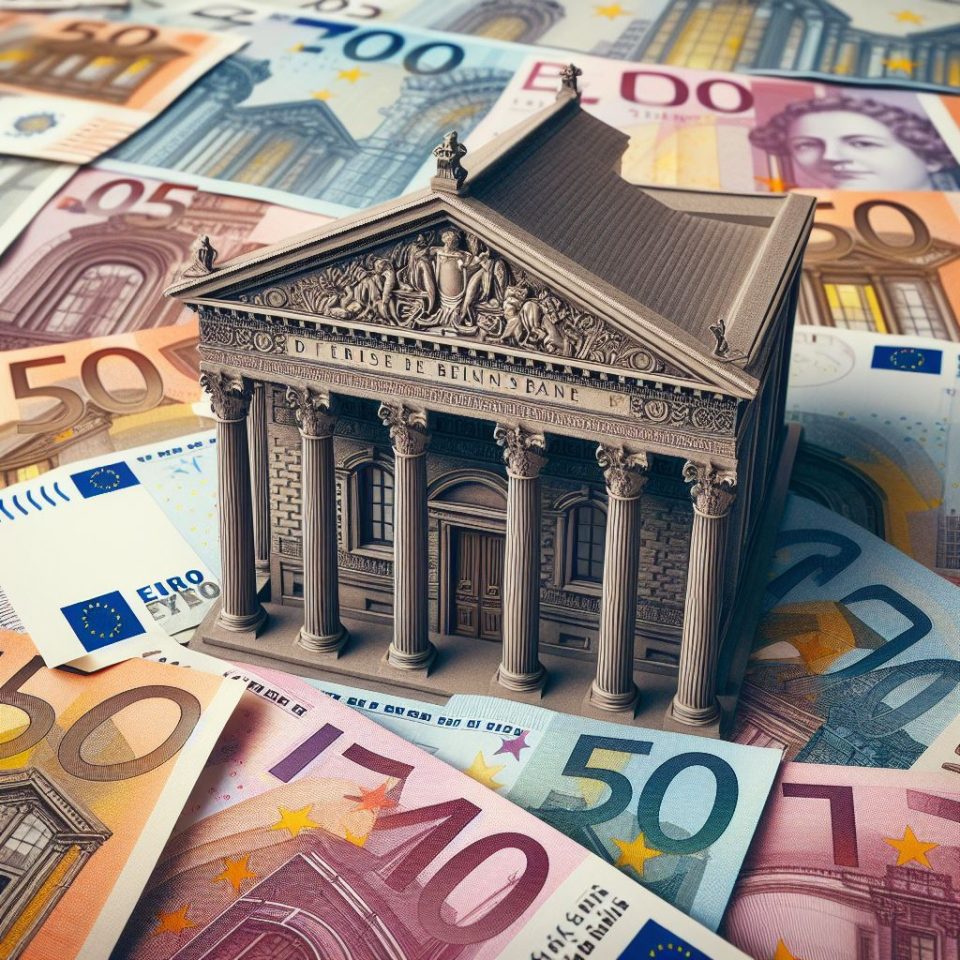The euro sank to its yearly low amidst mounting speculation that the European Central Bank (ECB) is poised to implement interest rate cuts ahead of the Federal Reserve. With market discussions intensifying over the potential extent of its decline, the euro tumbled nearly 1% to $1.0631 on Friday, breaching previous lows set in February and marking its weakest performance in five months. The currency is on track for a weekly decline of 2%, the sharpest since late 2022.
Following the ECB’s clear indication of impending rate cuts, analysts anticipate further downside for the euro. Strategists foresee a decline to $1.05 by mid-year and even the possibility of reaching parity against the US dollar if the Fed maintains its current interest rate stance. Banks such as Bank of America Corp., ING Bank NV, and Germany’s LBBW have already cautioned about the potential risks associated with the euro’s downward trajectory.
Francesco Pesole, strategist at ING Bank NV in London, emphasized the likelihood of the euro returning to the $1 to $1.05 range, particularly in an extreme scenario of divergence between the Fed and ECB policies. Brad Bechtel, global head of FX at Jefferies in New York, echoed this sentiment, projecting a move toward $1.05 or even $1.04, driven by geopolitical risks and the ECB’s anticipated easing cycle.
The ECB’s inclination towards rate cuts contrasts with the global trend towards fewer and slower interest rate adjustments, notably triggered by recent US inflation data. This divergence in monetary policies has widened the yield spread between 10-year Treasuries and German bonds, reflecting heightened uncertainty in the currency markets.
Traders are increasingly adopting a bearish stance on the euro, as indicated by one-month risk reversals and climbing implied volatility. Bloomberg’s forecast model suggests a higher probability of the euro touching the $1.05 mark within the next three months, underscoring the prevailing negative sentiment towards the currency.
Valentin Marinov, head of G-10 currency strategy at Credit Agricole, emphasized the significant monetary policy divergence as a key factor driving the euro-dollar pair lower. Kathleen Brooks, research director at XTB, highlighted $1.05 as the next critical level to watch, with the possibility of discussions about parity looming if this level is breached.
The descent of the euro to a yearly low underscores the evolving dynamics in global monetary policy and geopolitical tensions. As market participants brace for further volatility, the euro faces mounting pressure amidst speculation surrounding ECB rate cuts and diverging policy trajectories between the ECB and the Federal Reserve.

